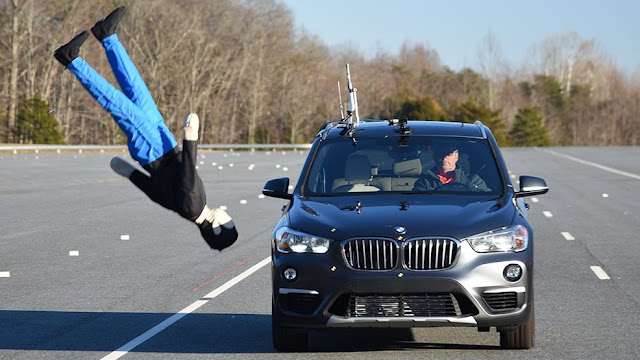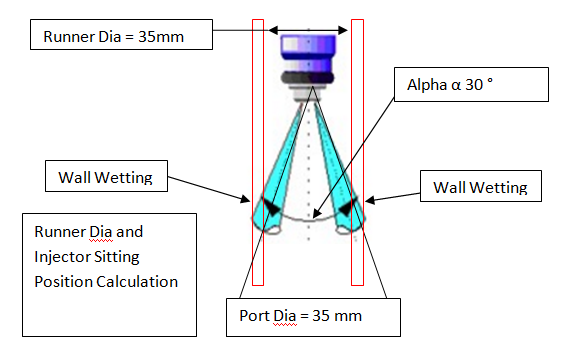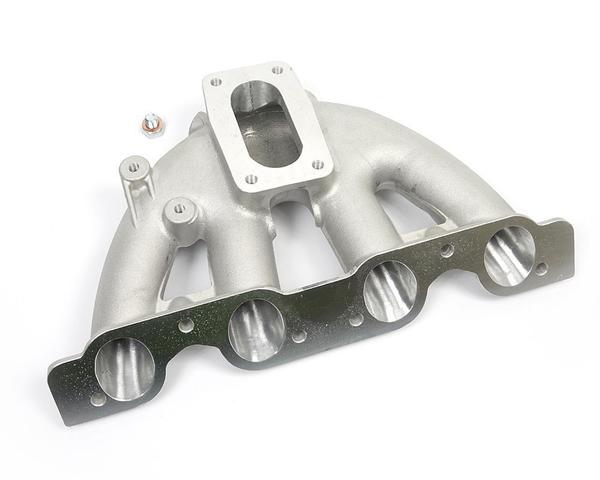Steering DFMEA
Please read previous blogs for steering introduction, concept, design review and numerical calculation.
Also the previous blogs explain what is severity, occurrence and detection. High RPN is risky and low RPM is good. DFMEA process is explained in previous blog.
Steering DFMEA
Mechanism
|
Advantage
|
Disadvantage
|
Pitman Arm (*All 4 types)
|
1:Bigger Mechanical Advantage
2:Good for Heavy Vehicle
|
1:Dead Spot Slack in centre
|
Variable Rack and Pinion
|
1:No Dead Spot Slack in centre
2:Quick Response
3:Simple Design
|
1:Less Life due to friction
|
(* Worm Sector, Worm Roller, Worm
Nut & Cam Lever)
NO
|
ITEM/
FUNCTION
|
POTENTIAL
FAILURE MODE
|
POTENTIAL
EFFECT
OF FAILURE |
SEVERITY
|
POTENTIAL
CAUSES
|
OCCURANCE
|
CURRENT
DESIGN CONTROLS
|
DETECTION
|
RPN
|
|
PREVENTION
|
DETECTION
|
|||||||||
1
|
RACK
AND PINION
|
Mechanical
Failure, Lubrication not Uniform,
Loosing
of Nut and Bolt
|
Steering
Failure
|
10
|
Obstruction
in movement of pinion over rack, damage to components
|
2
|
Simulation
for Burst Pressure, Stress and Strain.
Design
Calculation for Flared
Thread Dimension
|
Lubrication
Check, Vibration Measurement on Nut/Bolts, Material and Strength Test, Weld
Strength Test.
|
3
|
10*2*3=
60
|
Steering
Wheel Hard
|
8
|
5
|
3
|
8*5*3=
120
|
||||||
2
|
STEERING COLUMN AND WHEEL
|
Breakage, Mechanical Failure, High
Vibration
|
Steering Failure,
High Debris
|
10
|
Excess
Load Applied by Driver, Bump Steer
|
2
|
Strength
and Vibration Simulation of each component
|
Physical
Durability Testing of each component
|
3
|
10*2*3=
60
|
Driver
Tired, Ergonomic Issue
|
Drivability Issue
|
5
|
Wrong
Position of Steering Wheel
|
4
|
Calculate
Ergonomic Position
|
Steering
Wheel Check
|
5
|
5*4*5=
100
|
||
3
|
DRIVABILITY
|
Improper
Cornering, Difference in Left and Right Turn
|
Safety Issue, Vehicle Skid, Slip or
topple
|
10
|
Wrong
Length and Position of Steering Rack, Wrong Gear Ratio.
|
4
|
Calculation,
Layout and Simulation of Rack Location , and Gear Ratio
|
Minimum Corner Radios Measurement at
highest speed
|
4
|
10*4*4=
160
|
Vehicle
Not moving in Straight Line ( Waving)
|
Safety Issue
|
8
|
Rack
Pinion Mismatch, Gear Tooth Wear or Broken
|
2
|
Gear
Mess Simulation, Gear Tooth Strength Test
|
Gear Wear Test, Tooth Breakage Force
Measurement
|
2
|
8*2*2
=32
|
||
4
|
STEERING SENSOR
|
Electric
Failure
|
Safety Issue
|
9
|
Water
Entry, Electromagnetic Noise, High Vibration,
|
2
|
Select
Sensor Specification
After
checking humidity, electromagnetic noise and vibration on vehicle
|
Water Spray Test, Electromagnetic Antenna
Test ,
Vibration Measurement on Sensor
|
2
|
9*2*2=
36
|
Recommendation based on above DFMEA
NO
|
ITEM/
FUNCTION
|
POTENTIAL FAILURE MODE
|
RECOMMENDED ACTION
| |
1
|
RACK AND PINION
|
Mechanical Failure, Lubrication not Uniform,
Loosing of Nut and Bolt
| 1) Use Good Lubrication
2) Use High Surface Finish Gears
3) Reduce Welding and Joints in system
| |
2
|
STEERING COLUMN AND WHEEL
|
Breakage, Mechanical Failure, High Vibration
|
1) Use Aluminum Alloy or Steel Alloy for Manufacturing
| |
Driver Tired, Ergonomic Issue
|
1)Take many expert drivers opinion
| |||
3
|
DRIVABILITY
|
Improper Cornering, Difference in Left and Right Turn
|
1)Do many iteration for optimization of Rack Length and Gear Ratio
2) Benchmarking of Race Vehicle
3) Do only small modification in previous designs
| |
Vehicle Not moving in Straight Line ( Waving)
|
Use Alloy Steel Helical Gears with high surface finish and high toughness
| |||
4
|
STEERING SENSOR
|
Electric Failure
|
1)Use sensor cover
2)Use twisted shielded wire
3)Use high Vibration Resistance Sensor
|








